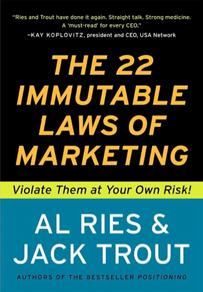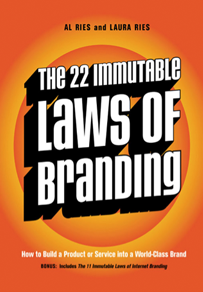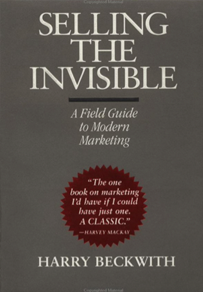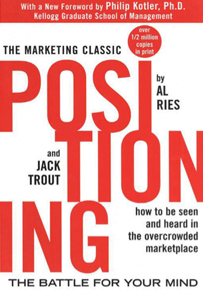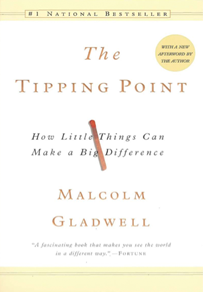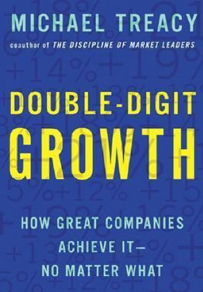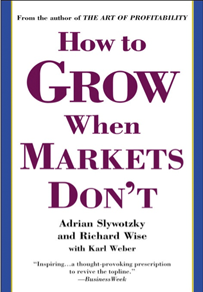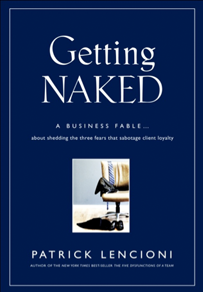Suggested Reading
Browse by Subject
-
The 22 Immutable Laws of Marketing
Violate Them at Your Own Risk
by All Ries and Jack Trout
After years of working on marketing principles and problems, Al Ries and Jack Trout have distilled their findings into the basic laws that govern success and failure in the marketplace. They call these principles the Immutable Laws of Growth and there are 22 of them. This isn’t a marketing textbook replete with complex theories and case studies. Rather, this is an easy to read book containing 22 bits of business wisdom, or “laws” of common sense marketing with some solid examples from the real world to prove them. From the Law of Leadership, to The Law of the Category, to The Law of the Mind, all the laws have relevance today. This is a great primer on the core concepts of effective marketing. The book enables you to focus very easily on the `laws’ that are most relevant to the challenges and opportunities which a company is currently facing.
-
The 22 Immutable Laws of Branding
How to Build a Product or Service Into a World-Class Brand
by All Ries and Laura Ries
“The 22 Immutable Laws of Branding” is the definitive text on branding, pairing anecdotes about some of the best brands in the world, like Rolex, Volvo, and Heineken, with ezpertise of marketing gurus Al and Laura Ries. Combining The 22 Immutable Laws of Branding and The 11 Immutable Laws of Internet Branding, the authors argue that the only way to stand out in today’s cluttered marketplace is to build your product or service into a brand—and provides the step-by-step instructions you need to do so. “The 22 Immutable Laws of Branding” also tackles one of the most challenging marketing problems today: branding on the Web. Ries and Ries divulge the controversial and counterintuitive strategies and secrets that both small and large companies have used to establish internet brands. “The 22 Immutable Laws of Branding” is an essential primer for anyone seeking to build a category dominating, world-class brand.
-
Selling the Invisible
A Field Guide to Modern Marketing
by Harry Beckwith
Instead of producing tangibles—automobiles, clothes, and tools—more and more businesses provide intangibles—health care, entertainment, financial services, and so on. However, according to Harry Beckwith, most of these intangibles are still being marketed like tangible products. How do you sell, develop, and grow something that can’t bee seen, touched or heard? “Selling the Invisible” answers that question by offering insights on how markets work and prospects think. Beckwith argues that what consumers are primarily interested in today are not features, but relationships. Even companies who think that they sell only tangible products should rethink their approach to product development and marketing and sales. Beckwith provides an excellent forum for thinking differently about the nature of services and how they can be effectively marketed. If you’re at all involved in marketing or sales, then “Selling the Invisible” is definitely a worthwhile read.
-
Positioning
The Battle For Your Mind
by Al Ries and Jack Trout
“Positioning” describes creating a “position” in a prospective customer’s mind—one that reflects a company’s own strengths and weaknesses as well as those of its competitors. Advertising gurus Ries and Trout explain how to: make and position an industry leader so that its name and message finds its way into the collective subconscious of your market—and stays there; position a follower so that it can occupy a niche not claimed by the leader; and, avoid letting a second product ride on the coattails of an established one. “Positioning” also shows you how to: use leading ad agency techniques to capture the biggest market share and become a household name; build your strategy around your competition’s weaknesses; reposition a strong competitor and create a weak spot; use your present position to its best advantage; choose the best name for your product; determine when—and why—less is more; and, analyze recent trends that affect your positioning. Ries and Trout provide many valuable case studies of some of the most phenomenal successes and failures in advertising history. “Positioning” is required reading for anyone in business.
-
Purple Cow
Transform Your Business by Being Remarkable
by Seth Godin
The rules of marketing have changed. Seth Godin describes how a number of incredibly successful brands, like HBO, Starbucks, JetBlue, and Apple have created new ways to differentiate themselves from all the other companies around them. “Purple Cow” has a simple message. Be remarkable. “Purple Cow” is about the why, the what, and the how of being remarkable. Godin writes, “Something remarkable is worth talking about. Worth noticing. Exceptional. New. Interesting. It’s a Purple Cow. Boring stuff is invisible. It’s a brown cow.” You’re either a Purple Cow or you’re not. You’re either remarkable or invisible. “Purple Cow” is an entertaining look into how remarkable marketers are taking action to separate and elevate themselves above the crowd. Entrepreneurs and marketing leaders of any size company can consistently outthink and outmarket their competitors by applying the real world ideas found in “Purple Cow.”
-
The Tipping Point
How Little Things Can Make a Big Difference
by Malcolm Gladwell
The tipping point is that magic moment when an idea, trend, or social behavior crosses a threshold, tips, and spreads like wildfire. Malcolm Gladwell argues that ideas, products, messages, and behaviors “spread just like viruses do.” Based on his research covering a number of different fields and industries, Gladwell identifies three key factors that each play a role in determining whether a product will launch successfully, an idea will spread or a particular trend will become popular. Gladwell’s discussion and illustration of the concepts of the Law of the Few, the Stickiness Factor, and the Power of Context comprise the majority of the book. Gladwell illustrates these concepts and their interdependency in a series of case studies and examples. “The Tipping Point” is about change and it offers a new method of understanding why change so often happens as quickly and unexpectedly as it does. Business leaders who understand “The Tipping Point” will have a way of interpreting the changing world around them.
-
Double Digit Growth
How Great Companies Achieve It—No Matter What
by Michael Treacy
Michael Treacy uncovers how great companies master growth each year and how all businesses can identify and exploit opportunities for increased revenues, gross margins, and profits. Treacy’s main point is simple—it is possible to grow any business by 10 percent or more, year after year, in good times and bad. He addresses the challenge of double-digit growth with five disciplines of growth: (1) keep the growth you have already earned, (2) take business from your competitors, (2) show up where growth is going to happen, (4) invade adjacent markets, and (5) invest in new lines of business. Treacy supports his argument with case studies of well-known and little-known companies that have achieved growth year after year based on this diversified approach. Treacy’s makes a compelling argument that sustainable, double-digit growth is a realistic and attainable business goal for any business.
-
How to Grow When Markets Don’t
by Adrian Slywotsky and Rickland Wise
Slywotsky and Wise analyze companies in mature markets that have managed to achieve significant growth without venturing outside their industry or acquiring other companies. Their chief insight is that established companies with experience in their field have, aside from their core business, a wealth of hidden assets—customer relationships, technical expertise, efficient business models—that they can exploit to grow new businesses. “How to Grow When Markets Don’t” is a worthwhile look at the possibilities open to mature companies looking to rejuvenate themselves.
-
The Rule of Three
Surviving and Thriving in Competitive Markets
by Jagdish Sheth and Rajendra Sisofia
“The Rule of Three” describes the evolution of markets as two complementary sectors – generalists, which cater to a large, mainstream group of customers; and specialists, which satisfy the needs of customers at both the high and low ends of the market. Any company caught in the middle (“the ditch”) is likely to be swallowed up or destroyed. Sheth and Sisodia argue that most markets resemble a shopping mall with specialty shops anchored by large stores. Drawing wisdom from these markets, “The Rule of Three” offers suggested strategies for the “Big 3” market leaders, as well as for mid-sized companies that want to achieve market leadership, and for specialists striving to flourish in the shadow of industry giants. The authors also explain how to recognize signs of market disruptions that can result in serious reversals and upheavals for companies caught unprepared. “The Rule of Three” provides insights into market dynamics that have strategic implications for businesses large and small alike.
-
Getting Naked
A Business Fable About Shedding the Three Fears That Sabotage Client Loyalty
by Patrick Lencioni
Written in the same dynamic style as his previous bestsellers in “Getting Naked,” Lencioni illustrates the principles of inspiring client loyalty through a business fable. He challenges service providers to be completely transparent and vulnerable and presents concrete steps for doing so in any organization. The story follows a small consulting firm, Lighthouse Partners, which often beats out big-name competitors for top clients. One such competitor buys out Lighthouse and learns important lessons about what it means to provide value to its clients. “Getting Naked” provides powerful, actionable tools to help readers gain a real, lasting competitive advantage.


